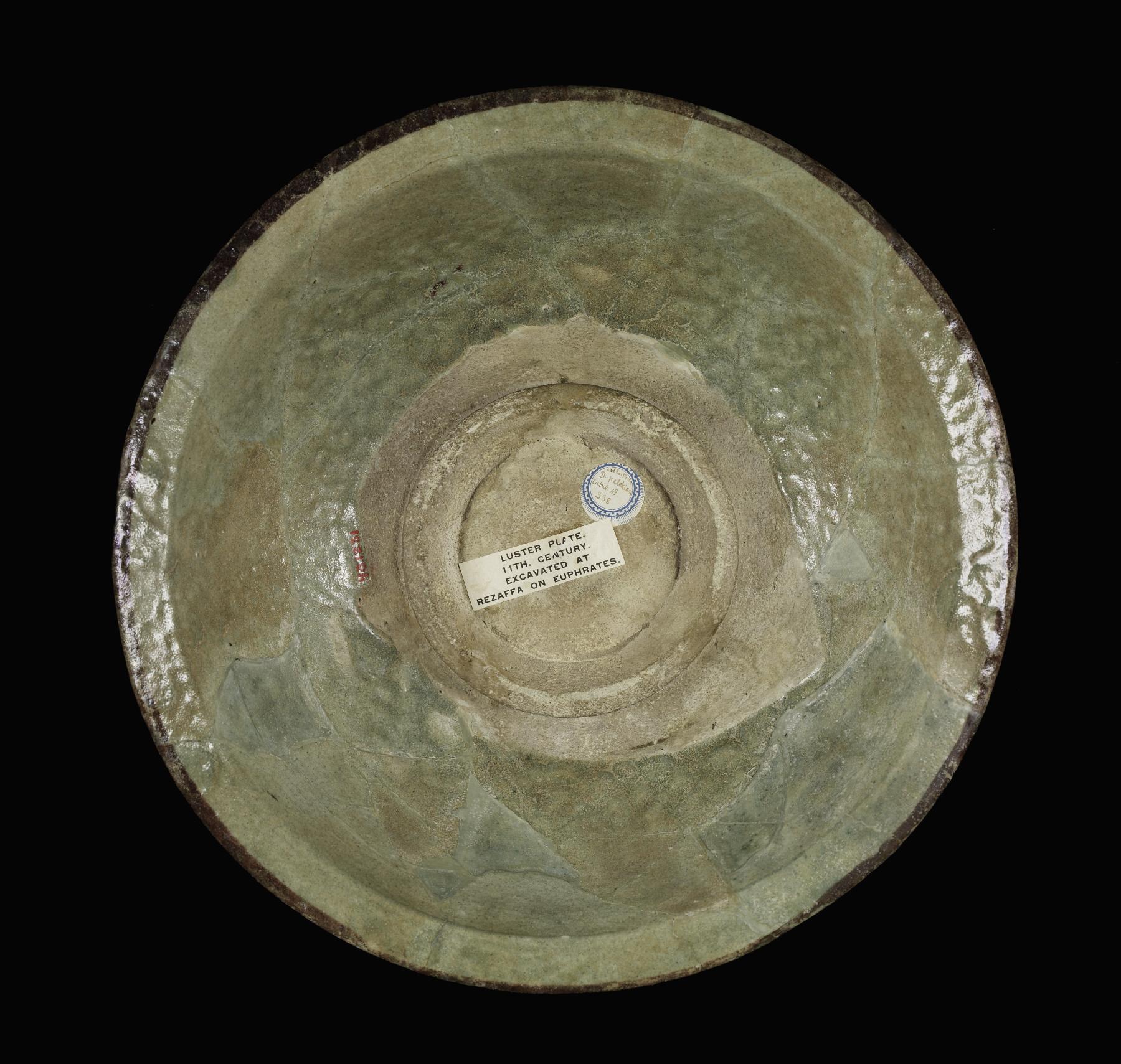Lusterware Bowl with Peacock
(Islamic World )
In Arab countries and Muslim realms in the Mediterranean region, artistic innovation flourished in the 9th-14th centuries. Lusterware was among the most original development of Arab potters, who mixed silver sulfides and copper oxides to create a shiny, metallic sheen on the surface of glazed earthenware bowls, plates, and other utilitarian vessels. This lusterware bowl with underglaze black is decorated with a peacock against a scrollwork background.
Provenance
Provenance (from the French provenir, 'to come from/forth') is the chronology of the ownership, custody, or location of a historical object. Learn more about provenance at the Walters.
Dikran Kelekian, Paris and New York [date and mode of acquisition unknown]; Henry Walters, Baltimore, 1927, by purchase; Walters Art Museum, 1931, by bequest.
Exhibitions
| 2013-2014 | Threshold to the Sacred: The Ark Door of Cairo’s Ben Ezra Synagogue . The Walters Art Museum, Baltimore; Yeshiva University Museum, New York. |
Conservation
| Date | Description | Narrative |
|---|---|---|
| 10/5/1953 | Treatment | cleaned |
| 4/18/1960 | Treatment | cleaned; coated |
| 7/11/2000 | Treatment | cleaned; loss compensation; other |
Geographies
Syria, Rusafah (Place of Origin)
Measurements
H: 3 3/4 × Diam: 13 3/4 in. (9.46 × 34.9 cm)
Credit Line
Acquired by Henry Walters, 1927
Location in Museum
Not on view
Accession Number
In libraries, galleries, museums, and archives, an accession number is a unique identifier assigned to each object in the collection.
In libraries, galleries, museums, and archives, an accession number is a unique identifier assigned to each object in the collection.
48.1231




